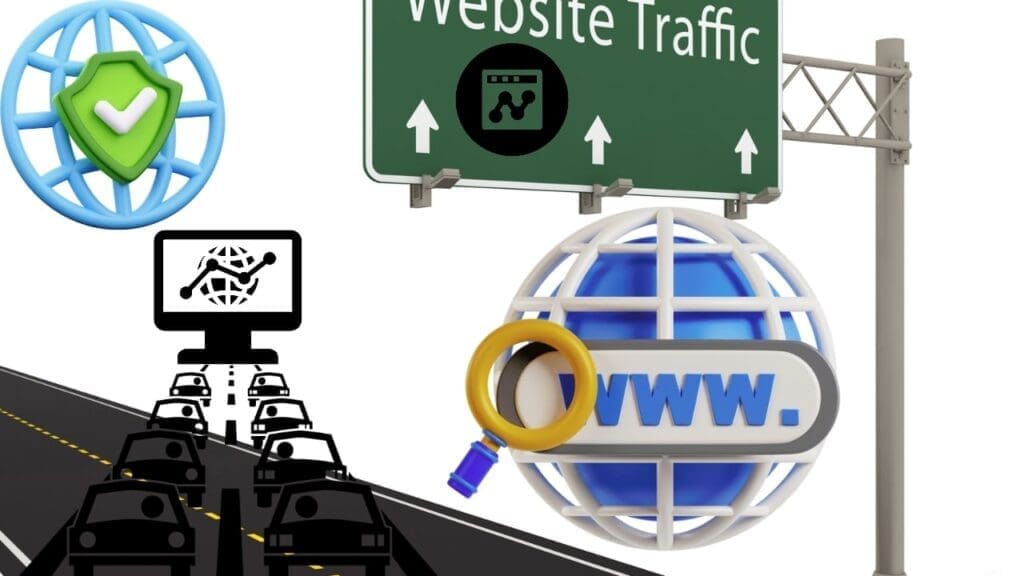
- How to Use Google Analytics to Track Your Blog Traffic and Analyze It: how to analyze your blog traffic
- How to Identify Your Top Traffic Sources
- The 5 Most Important Metrics to Track for Your Blog Traffic
- How to Track Your Blog Traffic Over Time: How to Analyze Your Blog Traffic
- How to Use Your Blog Traffic Data to Improve Your Content: how to analyze your blog traffic
- Conclusion
How to Use Google Analytics to Track Your Blog Traffic and Analyze It: how to analyze your blog traffic

how to analyze your blog traffic
How to analyze your blog traffic: Blog traffic is one of the most important metrics for bloggers. It can tell you how many people are visiting your blog, where they’re coming from, and what they’re interested in. This information can help you improve your content, marketing, and overall strategy.
One of the best ways to track your blog traffic is with Google Analytics. Google Analytics is a free tool that provides detailed insights into your website traffic. [How to analyze your blog traffic:]
You can use Google Analytics to track:
- The number of visitors to your blog [How to analyze your blog traffic:]
- The pages they visit [How to analyze your blog traffic:]
- Where they’re coming from [How to analyze your blog traffic:]
- What keywords they’re using to find your blog [How to analyze your blog traffic:]
- And much more [How to analyze your blog traffic:]
In this article, we’ll show you how to use Google Analytics to track your blog traffic and analyze it. We’ll cover everything from setting up Google Analytics to interpreting your data.

Setting Up Google Analytics
The first step is to set up Google Analytics. You can do this by creating a Google account and then signing up for Google Analytics. Once you’ve signed up, you’ll be asked to add a tracking code to your blog. [How to analyze your blog traffic:]
The tracking code is a small piece of JavaScript that you’ll need to add to the header of your blog’s HTML code. Once you’ve added the tracking code, Google Analytics will start tracking your traffic.
Tracking Your Blog Traffic

Once you’ve set up Google Analytics, you can start tracking your blog traffic. To do this, you’ll need to go to the Acquisition section of Google Analytics. This section will show you where your traffic is coming from.
You can also track the pages that your visitors are viewing in the Behavior section. This section will show you your most popular content and see what topics your visitors are interested in. [How to analyze your blog traffic:]
Analyzing Your Blog Traffic
Once you’ve tracked your blog traffic, you can start to analyze it. To do this, you’ll need to use the Reports section of Google Analytics. This section will show you a variety of reports that you can use to analyze your traffic.
For example, you can use the Conversion report to see how many visitors are taking the desired action, such as subscribing to your email list or making a purchase.
Improving Your Blog Traffic
Once you’ve analyzed your blog traffic, you can start to improve it. To do this, you’ll need to make changes to your content, marketing, and overall strategy. [How to analyze your blog traffic:]
For example, if you’re getting a lot of traffic from social media, you can create more social media content and share it more often.

Google Analytics is a powerful tool that can help you track your blog traffic and analyze it. By using Google Analytics, you can gain valuable insights into what’s working and what’s not. This information can help you improve your blog and attract more visitors.
Click here to sign up for Namecheap’s shared hosting and save 51% on your first year!
Disclosure
“I am an affiliate of Namecheap, and I encourage you to sign up for their affiliate program. I will earn a commission on every sale that I refer to them.”
How to Identify Your Top Traffic Sources

How to Identify Your Top Traffic Sources
How to analyze your blog traffic: Do you know where your blog traffic is coming from? If not, you’re missing out on a valuable opportunity to improve your blog’s performance. By understanding your top traffic sources, you can focus your marketing efforts on the channels that are most effective, and you can also tailor your content to appeal to your target audience.
In this article, I’ll show you how to identify your top traffic sources and how to analyze your blog traffic. I’ll also share some tips on how to use this information to improve your blog’s performance.
How to Identify Your Top Traffic Sources
There are a few different ways to identify your top traffic sources. One way is to use Google Analytics. Google Analytics will show you a breakdown of your traffic by source, including organic search, social media, direct traffic, and referral traffic. [How to analyze your blog traffic:]
Another way to identify your top traffic sources is to use a tool like SEMrush. SEMrush will show you a more detailed breakdown of your traffic sources, including the keywords that people are using to find your blog, the social media platforms that are driving traffic to your blog, and the websites that are linking to your blog.
How to Analyze Your Blog Traffic

Once you know your top traffic sources, you can start to analyze your blog traffic. This will help you to understand how people are finding your blog, and it will also help you to identify any areas where you can improve your blog’s performance. [How to analyze your blog traffic:]
Here are a few things to look for when analyzing your blog traffic:
- What are your most popular posts? This will give you an idea of the topics that your readers are most interested in. [How to analyze your blog traffic:]
- What are your most popular keywords? This will help you to optimize your blog content for search engines.
- Where is your traffic coming from? This will help you to focus your marketing efforts on the most effective channels. [How to analyze your blog traffic:]
- What are your bounce rates? This will tell you how engaged your readers are with your content. [How to analyze your blog traffic:]
Tips for Using Traffic Data to Improve Your Blog
Once you’ve analyzed your blog traffic, you can start to use this information to improve your blog’s performance.
Here are a few tips:
- Write more content about your most popular topics. This will help you to attract more readers and to keep them engaged. [How to analyze your blog traffic:]
- Optimize your blog content for your most popular keywords. This will help you to rank higher in search engines. [How to analyze your blog traffic:]
- Focus your marketing efforts on your most effective traffic sources. This will help you to reach more of your target audience. [How to analyze your blog traffic:]
- Reduce your bounce rates. This will help you to keep readers engaged with your content. [How to analyze your blog traffic:]

How to analyze your blog traffic: By understanding your top traffic sources and by analyzing your blog traffic, you can improve your blog’s performance and reach more of your target audience. By following the tips in this article, you can start to see results quickly.
Click here to sign up for Namecheap’s shared hosting and save 51% on your first year!

Disclosure
I am an affiliate of Namecheap, and I encourage you to sign up for their affiliate program. I will earn a commission on every sale that I refer to them.
The 5 Most Important Metrics to Track for Your Blog Traffic

How to analyze your blog traffic: Images are a great way to break up text, add visual interest, and make your blog posts more engaging. But how do you know which images are actually driving traffic to your blog?
In this post, we’ll discuss the 5 most important metrics to track for your blog traffic, and how you can use them to improve your image SEO.
**1. ** Total image views
![15 new top how to analyze your blog traffic 9 [How to analyze your blog traffic:]](https://b3216877.smushcdn.com/3216877/wp-content/uploads/2023/07/Copy-of-Copy-of-Copy-of-Copy-of-Blue-Bold-Business-YouTube-Thumbnail-21-1024x576.jpg?lossy=2&strip=0&webp=1)
This is the most basic metric to track, but it’s also one of the most important. The total number of times your images are viewed is a good indicator of how effective they are at attracting visitors to your blog.
**2. ** Unique image views
This metric tells you how many unique visitors have viewed your images. This is a more important metric than total image views, because it shows how many people are actually seeing your images. [How to analyze your blog traffic:]
**3. ** Average image view duration
This metric tells you how long people spend looking at your images. A high average image view duration is a good sign that your images are engaging and interesting.
**4. ** Exit rate from images
This metric tells you how many people leave your blog after viewing an image. A high exit rate from images is a sign that your images are not relevant to your content, or that they are not visually appealing. [How to analyze your blog traffic:]

**5. ** Click-through rate (CTR)
The CTR is the percentage of people who click on an image after viewing it. A high CTR is a good sign that your images are driving traffic to other pages on your blog.
How to Use These Metrics to Improve Your Image SEO
Once you’ve tracked these metrics for a while, you can start to use them to improve your image SEO.
Here are a few tips:
- Optimize your images for search engines. This means using relevant keywords in your image alt text and file names. [How to analyze your blog traffic:]
- Use high-quality images. Images that are sharp, clear, and well-lit will be more likely to attract visitors and improve your CTR. [How to analyze your blog traffic:]
- Place your images strategically. Images that are placed near the top of your blog posts are more likely to be seen and viewed. [How to analyze your blog traffic:]
- Use social media to share your images. When you share your images on social media, you’ll be exposed to a wider audience. [How to analyze your blog traffic:]
By tracking the 5 metrics mentioned in this post, you can improve your image SEO and attract more traffic to your blog. So what are you waiting for? Start tracking your images today!
Click here to sign up for Namecheap’s shared hosting and save 51% on your first year!
Disclaimer:
I am an affiliate of Namecheap, and I encourage you to sign up for their affiliate program. I will earn a commission on every sale that I refer to them.
How to Track Your Blog Traffic Over Time: How to Analyze Your Blog Traffic

Blog traffic is one of the most important metrics for any blogger. It tells you how many people are visiting your blog, where they’re coming from, and what they’re interested in. But tracking your blog traffic can be a daunting task. There are so many different tools and services out there, and it can be hard to know which ones are right for you. [How to analyze your blog traffic:]
In this article, I’ll walk you through the process of tracking your blog traffic over time. I’ll show you how to choose the right tools, how to collect data, and how to analyze your traffic data to improve your blog.

Choosing the Right Tools
There are a number of different tools available for tracking blog traffic.
Some of the most popular tools include:
- Google Analytics [How to analyze your blog traffic:]
- Statcounter [How to analyze your blog traffic:]
- Piwik [How to analyze your blog traffic:]
- Clicky [How to analyze your blog traffic:]
Each of these tools has its own strengths and weaknesses. Google Analytics is the most popular tool, but it can be a bit complex to set up. Statcounter is a good option if you’re looking for a simpler tool. Piwik is a free and open-source tool that’s a good choice if you’re on a budget. Clicky is a paid tool that offers a number of advanced features.
Collecting Data
Once you’ve chosen a tool, you need to start collecting data.
Most tools will allow you to track the following information:
- Unique visitors
- Page views
- Bounce rate
- Referring websites
- Search terms [How to analyze your blog traffic:]
You can collect data for a specific period of time, or you can track your traffic over time.

Analyzing Your Traffic Data
Once you have some data, you need to start analyzing it. This is where you’ll start to see trends in your traffic.
You can use your data to answer questions like:
- Where are my visitors coming from? [How to analyze your blog traffic:]
- What pages are they visiting?
- What search terms are they using?
- What’s my bounce rate?
Once you know the answers to these questions, you can start to make changes to your blog to improve your traffic.
Improving Your Blog
Once you’ve analyzed your traffic data, you can start to make changes to your blog to improve your traffic.
Here are a few tips:
- Target your content to your target audience. [How to analyze your blog traffic:]
- Use relevant keywords in your title tags and meta descriptions.
- Promote your blog on social media. [How to analyze your blog traffic:]
- Guest post on other blogs.
- Submit your blog to directories. [How to analyze your blog traffic:]
By following these tips, you can improve your blog traffic and reach a wider audience.
Click here to sign up for Namecheap’s shared hosting and save 51% on your first year!
Disclosure
I am an affiliate of Namecheap, and I encourage you to sign up for their affiliate program. I will earn a commission on every sale that I refer to them.
How to Use Your Blog Traffic Data to Improve Your Content: how to analyze your blog traffic

How to Use Your Blog Traffic Data to Improve Your Content
Do you want to improve your blog’s content? If so, you need to understand your blog traffic data. By analyzing your traffic data, you can see what topics are popular with your readers, what keywords they’re using to find your blog, and where they’re coming from. This information can help you to create content that your readers will love and that will rank higher in search engines.
In this article, I’ll show you how to analyze your blog traffic data and how to use that information to improve your content. I’ll also share some tips on how to write content that your readers will love.
How to Analyze Your Blog Traffic Data
There are a few different ways to analyze your blog traffic data. One way is to use Google Analytics. Google Analytics will show you a breakdown of your traffic by source, including organic search, social media, direct traffic, and referral traffic.
Another way to analyze your blog traffic data is to use a tool like SEMrush. SEMrush will show you a more detailed breakdown of your traffic sources, including the keywords that people are using to find your blog, the social media platforms that are driving traffic to your blog, and the websites that are linking to your blog.
Once you have a good understanding of your blog traffic data, you can start to use that information to improve your content.

Here are a few tips:
- Write about topics that are popular with your readers. This is the most important thing you can do to improve your content. If you’re writing about topics that your readers are interested in, they’re more likely to read and share your content. [How to analyze your blog traffic:]
- Optimize your content for keywords. When you’re writing content, be sure to include keywords that people are using to find your blog. This will help your content to rank higher in search engines. [How to analyze your blog traffic:]
- Make your content engaging. People are more likely to read and share content that is engaging. Use images, videos, and other media to break up your text and make your content more visually appealing. [How to analyze your blog traffic:]
- Write for your audience. When you’re writing content, keep your audience in mind. What are they interested in? What kind of language do they use? Write in a way that will resonate with your audience. [How to analyze your blog traffic:]
Tips for Writing Content That Your Readers Will Love

In addition to the tips above, here are a few more tips for writing content that your readers will love:
- Be yourself. Don’t try to be someone you’re not. Your readers will be able to tell if you’re being genuine, and they’ll appreciate your authenticity. [How to analyze your blog traffic:]
- Be passionate. If you’re passionate about the topics you’re writing about, your readers will be able to tell. Your passion will come through in your writing, and it will make your content more engaging. [How to analyze your blog traffic:]
- Be helpful. Your readers should be able to learn something from your content. If you can provide them with valuable information, they’ll be more likely to read and share your content. [How to analyze your blog traffic:]
Conclusion
By analyzing your blog traffic data and by following the tips above, you can improve your content and reach more readers. By writing content that your readers love, you can build a loyal following and grow your blog.
Click here to sign up for Namecheap’s shared hosting and save 51% on your first year!
Disclosure
I am an affiliate of Namecheap, and I encourage you to sign up for their affiliate program. I will earn a commission on every sale that I refer to them.



Pingback: 9 Best Blog Domain Top Ideas -
Pingback: 10 Of The Best Way To Measure Your Blog's Success -
Pingback: 15 New Good How Much Can I Earn From AdSense On My Blog -
Pingback: 5 Best Ideas How To Use ChatGPT To Make Money -
Pingback: 7 Best Ways How To Start A Blog In 2023 -
Pingback: 10 Ways How To Become A Successful Blogger -